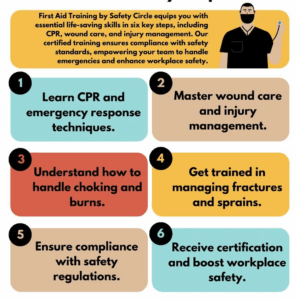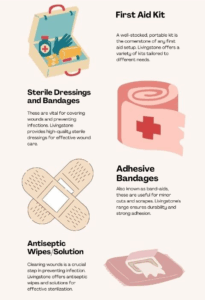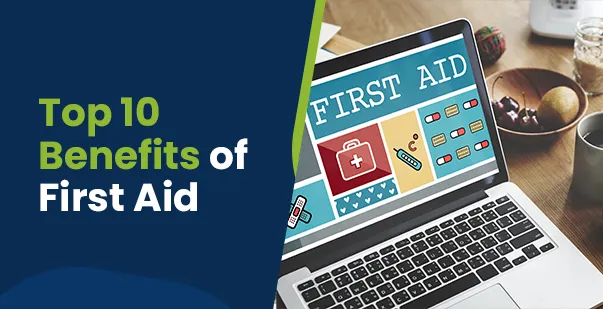Table of Contents:
- Introduction
- Benefits of Investing in First Aid in the Workplace
- How to Implement First Aid Training in the Workplace?
- Conclusion: Promote A Productive and Safe Workplace
Workplaces in the US may have the best health and safety records in the world, but that doesn’t imply it is accident-free. According to U.S. Bureau of Labor Statistics (BLS, there were 5,283 fatal work injuries recorded in the United States. The total cost to businesses and the broader economy is estimated to be $4.2 trillion, due to spending on healthcare, lost work productivity, as well as estimates of lost quality of life and lives lost.
At first glance, your workplace may also seem like a secure spot. However, accidents can happen at a moment’s notice. Are you prepared to handle such occurrences? There will be a tremendous need for first aid in the workplace to ensure employees know how to respond to or tackle emergencies.
Read on to learn more about the benefits and best practices of first aid training in your workplace.

Benefits of Investing in First Aid in the Workplace
Workplace first aid refers to the temporary, immediate care given to a person after an injury occurs. It includes emergency aid measures to stabilize the employee’s condition while waiting for a healthcare provider to arrive. Now, let us explore the reasons why first aid certification is inevitable for your employees in the workplace.
Immediate Response to Emergencies
First aid training for employees gives you the ability to respond to medical emergencies immediately. When an accident happens, the faster the response, the better the outcome. First aid training will enable you to assess the situation, provide appropriate treatment, and help stabilize the injured person until professional medical help arrives. Whether it’s administering CPR, stopping bleeding, or assisting someone who has fainted, first aid training ensures you are prepared to act quickly and effectively.
Increased Safety and Preparedness
First aid at the workplace doesn’t just teach you how to handle emergencies; it also prepares you to recognize potential hazards. Through training, you will learn to identify harmful conditions and unsafe practices that could lead to accidents or injuries. You will learn to follow safety protocols, make safety-conscious decisions, and report hazards that could endanger yourself or your coworkers. For instance, you will focus on keeping walkways clear, using proper lifting techniques, and reporting unsafe conditions. This heightened awareness will contribute to a safer and more prepared work environment.
Promote a Faster Recovery for Employees
When an employee in the workplace is injured or falls ill at work, administering first aid can significantly contribute to their recovery. Immediate care can help control pain, reduce swelling, and prevent infection, ultimately leading to a faster and more complete recovery. For example, treating a burn immediately with cool water can prevent further skin damage and reduce pain. Similarly, applying pressure to a wound and elevating a limb can stop excessive bleeding and prevent shock. Moreover, employees who receive prompt first aid at work are less likely to suffer from long-term health issues. It will reduce absenteeism and promote a faster return to work.
Comply with Legal and Regulatory Requirements
In many industries and countries, having a First Aid at Work course is a legal requirement. Health and safety regulations require certain workplaces, especially those with higher risks (such as construction sites or manufacturing plants), to have employees who are trained in first aid and CPR. Failure to comply with these regulations can result in fines, penalties, or even legal action in the event of an accident. Even if first aid in the workplace isn’t legally required in your area, it’s always better to be proactive in safeguarding your employees’ health and safety.
Reduce Workplace Accidents and Injuries
While it’s impossible to eliminate all risks, having first-aid-trained employees can help reduce the likelihood of workplace accidents and injuries. First aid in the workplace often includes elements of hazard identification and risk management. The curriculum will teach you how to recognize potential safety hazards and take steps to prevent them. In this way, you can reduce the number of accidents that occur, particularly those that could lead to more serious injuries. Furthermore, when you know how to respond to injuries, you will not panic and can make confident decisions in high-pressure situations.
Better Mental Health Support
Apart from physical health, the significance of first aid in the workplace extends to the well-being of your mental health. The component of mental health first aid training teaches you how to recognize signs of mental health struggles such as anxiety, depression, or stress. With the skills gained, you can provide initial support to colleagues experiencing mental health challenges. You can encourage them to seek professional help and create a more supportive work environment. Addressing such mental health concerns early will reduce the stigma and foster a culture of care.
Improve the Effectiveness of Emergency Response
During a first workplace emergency, things can quickly become chaotic, and it can be difficult to think clearly. First aid training ensures that you know exactly what steps to take and how to prioritize your actions. It fosters a collaborative environment as your team members learn to delegate tasks, remain calm under pressure, and follow instructions.
It will make it easier to handle a variety of emergencies, such as electrical accidents, chemical spills, or sudden medical conditions. When multiple employees are trained in first aid in the workplace, you create a dynamic team of responders who can act quickly and effectively. This organized and coordinated approach to emergencies reduces confusion and ensures that everyone is on the same page, making the response more efficient. These skills translate well to everyday workplace scenarios, enhancing overall team cohesion and communication.
Cost-Effective in the Long Term
Although the initial cost of investing in first aid in the workplace may be high, it can be worthwhile for any industry. Employees’ knowledge of first aid can significantly reduce the costs associated with workplace accidents, injuries, and health issues. These costs include medical bills, workers’ compensation claims, insurance premiums, and legal fees in the case of lawsuits. A trained workforce can help reduce these financial risks and avoid costly downtime due to injury or illness.
Additionally, by preventing accidents from worsening or leading to long-term health issues, you can reduce your company’s financial impact. The sooner an employee receives proper care, the sooner they can return to work, ensuring minimal disruption to productivity.
Improve Workplace Morale and Employee Confidence
Providing first aid training to employees can improve overall morale within the workplace. When employees feel that their well-being is prioritized, they are more likely to be motivated, engaged, and satisfied with their jobs. Additionally, having first aid skills gives you a sense of confidence in your ability to respond to emergencies. Knowing that you have the skills to help your coworkers or handle a situation with competence can boost your self-esteem and reduce anxiety during stressful situations. Moreover, employees who feel safe and supported by their employer are likely to be more loyal, which can lead to reduced turnover and increased productivity in the long run.
Enhanced Reputation
Companies that demonstrate a commitment to safety and health are viewed as responsible and reliable, which can enhance their overall public image. When you prioritize safety and employee well-being, your organization can gain a positive reputation within their industry and the community. Employees, clients, and customers are more likely to trust you when you invest in first-aid training and ensure a safe working environment. Such a good reputation will drive you to attract and retain top talent, as well as maintain strong business relationships.
Read More: First Aid For An Unconscious Person
How to Implement First Aid Training in the Workplace?
As an employer, ensuring the safety and well-being of employees is your fundamental responsibility. If you’re looking to implement First aid in the workplace, here’s a step-by-step guide on how to do it effectively:
Assess the Needs of Your Workplace
The first step in implementing first aid in the workplace is to assess the specific needs of your business. Every workplace is unique, and the risks vary depending on the nature of the work, the environment, and the number of employees. You can consider that high-risk workplaces may require specialized first aid training, such as handling burns, fractures, or machinery accidents.
The number of employees you have may influence the scope of the training. Larger organizations might need to have multiple trained individuals across different departments. Also, Understand the common medical emergencies that might occur. For example, offices might deal with fainting or heart attacks, while factories may need to address more physical injuries, such as cuts and burns.
Choose the Right First Aid Training Program
Many providers are offering first aid courses, so choose the one that meets both your organizational needs and legal requirements. Be sure to select a course that addresses the types of medical emergencies your workers may encounter. For example, if you are in high-risk industries like construction or manufacturing, your employees may require advanced training that includes CPR and AED.
Identify Employees for Training
Once you’ve chosen the right training program, the next step is to identify which employees should undergo training. It includes,
- Key Personnel: Designate employees such as supervisors, team leads, or health and safety officers as primary responders in case of an emergency.
- High-Risk Departments: Employees working in higher-risk environments, such as production floors, construction sites, or warehouses, should receive specialized first aid training.
Schedule and Organize the Training
Coordinate the scheduling of first aid training to minimize disruption to daily operations. Offer training at different times (e.g., during work hours, weekends, or after shifts) to ensure that as many employees as possible can attend. Set a timeline for completing the training. Track employee participation to ensure that all relevant staff members are trained.
Equip the Workplace with Proper First Aid Supplies
Training is only effective if your workplace is equipped with the right tools to respond to emergencies. Here’s what you should do:
- First Aid Kits: Ensure that every department or area of your workplace has a well-stocked first aid kit. The kit should include bandages, gauze, antiseptics, gloves, and more.
- AED Devices: Automated external defibrillators should be installed in workplaces with higher cardiac emergency risks, such as gyms or offices.
- Regular Inspections: Designate someone to regularly check the condition and stock levels of your first aid kits and medical supplies.

Develop an Emergency Response Plan
First aid training is part of a larger emergency response plan. Make sure your plan is clear, accessible, and regularly updated. The plan should include:
- Clear Emergency Protocols: Outline the steps employees should take in an emergency (e.g., who to contact, where to go, and what to do before help arrives).
- Roles & Responsibilities: Specify who is responsible for what during an emergency (e.g., first aider, supervisor, or team leader).
- Evacuation Procedures: Ensure a clear evacuation procedure is in place for more severe emergencies, such as fires or natural disasters.
Monitor and Evaluate the Program’s Effectiveness
After implementing first aid training, make sure to evaluate its effectiveness regularly. Survey employees to gauge their confidence in using their first aid skills in an emergency. Track workplace injuries and health emergencies to assess whether first aid training is helping to manage and reduce the severity of these incidents. To ensure that the training content and delivery method were effective, obtain feedback from employees who have completed the course.
Read More: CPR vs. BLS Training: What’s the Difference?
Conclusion: Promote A Productive and Safe Workplace
First aid in the workplace is more than just a requirement, and it’s an investment in the safety and well-being of your employees. The significance of first aid training to both the employer and the employee in creating a more safety-conscious work environment. From reducing the severity of injuries to fostering a culture of safety, the benefits of first aid training extend far beyond the immediate emergency. Assess your needs, choose the right training program, schedule sessions, and foster continuous learning, so that your workplace is ready to handle medical emergencies effectively and with confidence.







